... I think
'the long
established'
(te
taketake)
at Cb3-10
could have
been placed
at the
vertical
'line of
fire' at the
end of the
main part of
Auriga:


| FEBRUARY 15 (46) |
346 |
JANUARY 28 (393) |
61 |
MARCH 31 (28 + 62) |
APRIL 1 (91) |
13 |
APRIL 15 (105) |
| MARCH 28 (87) |
MARCH 11 (69) |
MAY 11 (90 + 41) |
12 (132) |
MAY 26 (146) |
 |
 |
 |
 |
 |
| Ca2-1 (27 = 87 - 60) |
*Ca14-11 (374) |
Cb2-20 (436) |
Cb2-21 |
Cb3-10 (451) |
| Te heke |
te heke |
ka tuu te toga o te manu |
kua tapu - no te manukua tapu - no te manu |
te taketake |
| April 17 (*27 + 80) |
March 30 (89) |
May 31 (151) |
June 1 (152) |
15 (166) |
| HAMAL (*30)
MENKENT (*213) |
*377 = *12 + 365
COR CAROLI (*195) |
HAEDUS I (*74)
*257 |
HAEDUS II (*75) |
PRAJA-PĀTI, MENKALINAN, MAHASHIM
*272 |
| October 17 (290) |
September 29 (272) |
November 30 (334) |
December 1 (75 + 260) |
December 15 (349) |
| AUGUST 27 (229) |
JULY 30 (211) |
SEPTEMBER 30 (273) |
OCTOBER 1 (274) |
OCTOBER 15 (288) |
| SEPT 27 (270) |
SEPT 9 (252) |
NOV 10 (314, π) |
NOV 11 (315) |
NOV 25 (329) |
| Take The Marquesans are the only people who own to a distinctive national name, and retain a tradition of the road they travelled from their original habitat, until they arrived at the Marquesan Islands. They call themselves te Take, 'the Take nation'. Fornander.
Take, Tuvaluan for the Black Noddy (Anous Minutes). The specific epithet taketake is Māori for long established, ancient, or original. In the Rapa Nui mythology, the deity Make-make was the chief god of the birdman cult, the other three gods associated with it being Hawa-tuu-take-take (the Chief of the eggs) his wife Vie Hoa and Vie Kanatea. Wikipedia.
|
The Chinese
star list
suggests
there was
connection
between Legs
(Wolf) and
η Andromedae
respectively
between
Wings
(Snake) and
Alkes:
| 1 |
Horn |
α Virginis (Spica) |
Crocodile |
(202.7) |
Oct 9 (282) |
282 = 265 + 17 |
| 2 |
Neck |
κ Virginis |
Dragon |
(214.8) |
Oct 21 (294) |
294 = 282 + 12 |
| 3 |
Root |
α Librae (Zuben Elgenubi) |
Badger |
(224.2) |
Oct 31 (304) |
304 = 295 + 9 |
| 4 |
Room |
π Scorpii (Vrischika) |
Hare |
(241.3) |
Nov 17 (321) |
321 = 304 + 17 |
| 5 |
Heart |
σ Scorpii |
Fox |
(247.0) |
Nov 23 (327) |
327 = 321 + 6 |
| 6 |
Tail |
μ Scorpii (Denebakrab) |
Tiger |
(254.7) |
Nov 30 (334) |
334 = 327 + 9 |
| 7 |
Winnowing Basket |
γ Sagittarii (Nash) |
Leopard |
(273.7) |
Dec 19 (353) |
353 = 334 + 19 |
| December solstice |
| 8 |
South Dipper |
φ Sagittarii (?) |
Unicorn |
(284.0) |
Dec 30 (364) |
364 = 353 + 11 |
| 9 |
Ox / Herd Boy |
β Capricornii (Dabih) |
Buffalo |
(308.0) |
Jan 23 (388) |
388 = 364 + 24 |
| 10 |
Girl |
ε Aquarii (Albali) |
Bat |
(314.8) |
Jan 29 (394) |
394 = 388 + 6 |
| 11 |
Emptiness |
β Aquarii (Sadalsud) |
Rat |
(325.9) |
Feb 9 (405) |
405 = 394 + 11 |
| 12 |
Rooftop |
α Aquarii (Sadalmelik) |
Swallow |
(334.6) |
Feb 18 (414) |
414 = 405 + 9 |
| 13 |
House |
α Pegasi (Markab) |
Pig |
(349.5) |
Mar 5 (429) |
429 = 414 + 15 |
| March equinox |
| 14 |
Wall |
γ Pegasi (Algenib) |
Porcupine |
(1.8) |
Mar 22 (81) |
81 |
| 15 |
Legs |
η Andromedae (?) |
Wolf |
(11.4) |
Apr 1 (91) |
91 = 81 + 10 |
| 16 |
Bond |
β Arietis (Sheratan) |
Dog |
(27.4) |
Apr 17 (107) |
107 = 91 + 16 |
| 17 |
Stomach |
4╣ Arietis (Bharani) |
Pheasant |
(41.4) |
May 1 (121) |
121 = 107 + 14 |
| 18 |
Hairy Head |
η Tauri (Alcyone) (?) |
Cockerel |
(56.1) |
May 16 (136) |
136 = 121 + 15 |
| 19 |
Net |
ε Tauri (Ain) |
Crow |
(65.7) |
May 25 (145) |
145 = 136 + 9 |
| 20 |
Turtle |
λ Orionis (Heka) |
Monkey |
(83.2) |
Jun 12 (163) |
163 = 145 + 18 |
| 21 |
Three Stars |
ζ Orionis (Alnitak) |
Gibbon |
(84.7) |
Jun 13 (164) |
164 = 163 + 1 |
| June solstice |
| 22 |
Well |
μ Gemini (Tejat Posterior) |
Tapir |
(95.4) |
Jun 24 (175) |
175 = 164 + 11 |
| 23 |
Ghost |
ρ Gemini ? |
Goat |
(112.1) |
Jul 11 (192) |
192 = 175 + 17 |
| 24 |
Willow |
δ Hydrae |
Stag |
(129.6) |
Jul 28 (209) |
209 = 192 + 17 |
| 25 |
Star |
α Hydrae (Alphard) |
Horse |
(142.3) |
Aug 10 (222) |
222 = 209 + 11 |
| 26 |
Extended Net |
ε Hydrae / μ Hydrae |
Ox |
(131.9 / 157.1) |
Jul 30 (211) / Aug 25 (237) |
237 = 222 + 15 |
| 27 |
Wings |
α Crateris (Alkes) |
Snake |
(165.6) |
Sep 2 (245) |
245 = 237 + 8 |
| 28 |
Chariot |
γ Corvi (Gienah) |
Worm |
(185.1) |
Sep 22 (265) |
265 = 245 + 20 |
| September equinox |
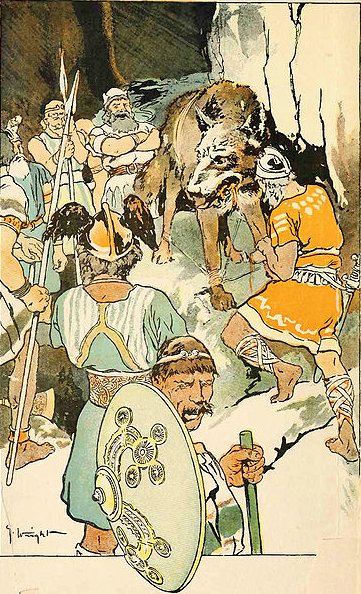
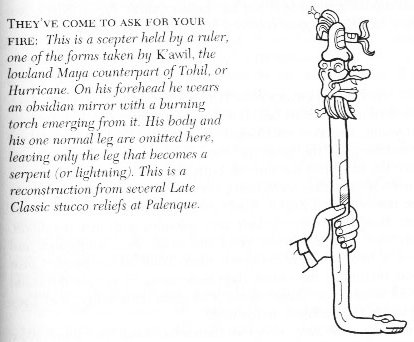
Ruti
5
was
the
day
when
the
Sun
reached
ξ
Draconis
(Grumium,
the
Jaw
of
the
Dragon)
and
when the
Full
Moon
was
in
day
408.
This
was
when
the
Full
Moon king
(Hotu)
received
the
neck
of
the
broken
stone
statue
of
his
ancester
Oto
Uta.
Furthermore, the
Chinese
list
suggests
there
was a
connection
between
Neck
(Dragon)
and κ
Virginis
-
approximately
half a
year
later
than
Betelgeuze
(α
Orionis)
and the
Lord of
Created
Beings (Praja-pāti, δ Aurigae):
| OCTOBER 11 |
12 |
13 |
14 (*207) |
15 (288) |
| "AUGUST 11 |
12 |
13 (*145) |
14 |
15 (227) |
 |
 |
 |
 |
 |
| Ga8-1 (204) |
Ga8-2 |
Ga8-3 |
Ga8-4 |
Ga8-5 |
| KELB ALRAI = β Ophiuchi, μ Arae (268.1), KEW HO (Nine Rivers) = μ Herculis (268.6), η Pavonis (268.7), APOLLYON = ι Scorpii (268.9) |
MULIPHEN = γ Ophiuchi (269.0), BASANISMUS = G Scorpii (269.5), PHERKARD = δ Ursae Minoris (269.9) |
PTOLEMY CLUSTER = M7 Scorpii (270.5), GRUMIUM (Jaw) = ξ Draconis (270.9) |
RUKBALGETHI GENUBI = θ Herculis (271.1), ξ Herculis (271.5), ETAMIN =γ Draconis, ν Herculis (271.7), ν Ophiuchi (271.8) |
CAT'S EYE = NGC6543 Draconis (272.2), ζ Serpentis (272.4), τ Ophiuchi (272.9) |
| December 14 (*268) |
15 |
16 (350) |
17 |
18 (*272) |
| ░December 10 (*264) |
11 (345) |
12 |
13 |
14 (*268) |
| 'November 17 (*241) |
18 |
19 |
20 (324) |
21 (*245) |
| "November 3 |
4 |
Ruti 5 (*229) |
6 (310) |
7 |
| NAKSHATRA DATES: |
| APRIL 12 |
13 (468) |
4-14 (104) |
15 (*390) |
16 (*26) |
| "FEBRUARY 10 |
11 |
12 (408) |
13 (*329) |
2-14 (45) |
| μ Columbae, SAIPH = κ Orionis (86.5), τ Aurigae, ζ Leporis (86.6) |
υ Aurigae (87.1), ν Aurigae (87.2), WEZN (Weight) = β Columbae, δ Leporis (87.7), TZE (Son) = λ Columbae (87.9) |
Ardra-6 / ANA-VARU-8 (Pillar to sit by)
χ╣ Orionis, ξ Aurigae (88.1), BETELGEUZE = α Orionis (88.3), ξ Columbae (88.5), σ Columbae (88.7)
ZUBEN ELGENUBI (α Librae)
|
η Leporis (89.0), PRAJA-PĀTI (Lord of Created Beings) = δ Aurigae, MENKALINAN = β Aurigae, MAHASHIM = θ Aurigae, and γ COLUMBAE (89.3), π Aurigae (89.4), η Columbae (89.7) |
μ Orionis (90.3), χ▓ Orionis (90.5) |
| June 15 |
16 |
17 (168) |
18 |
19 (*90) |
| ░June 11 |
12 |
13 (164) |
14 |
15 (*86) |
| 'May 19 (*59) |
20 |
21 (141) |
22 |
23 (*63) |
| "May 5 |
6 |
7 (127) |
8 |
9 (49) |
 |
 |
 |
 |
 |
| Ga1-22 |
Ga1-23 |
Ga1-24 |
Ga1-25 |
Ga1-26 |
Grumium
(the
Dragon's
Jaw) could
have
been
the
enchanted
jawbone
of
Maui,
received
from
his
ancestress
Muri
ranga
whenua.
It
was
without flesh
like
the
Mayan
sign
for
10 (lahun):

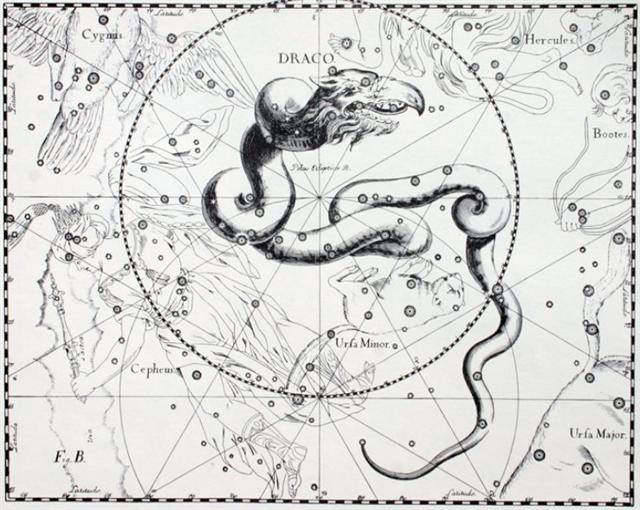
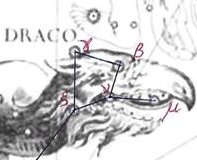
| AUGUST 14 |
15 |
16 (*148) |
17 (229) |
18 |
19 |
| "JUNE 14 |
15 |
16 |
17 (168) |
18 |
19 (*90) |
 |
 |
 |
 |
 |
 |
| Ga6-6 |
Ga6-7 |
Ga6-8 (148) |
Ga6-9 |
Ga6-10 |
Ga6-11 |
| MUPHRID = η Bootis (210.1), ζ Centauri (210.3) |
φ Centauri (211.0), υ╣ Centauri (211.1), υ▓ Centauri (211.8), τ Virginis (211.9) |
AGENA = β Centauri (212.1), θ Apodis (212.5), THUBAN = α Draconis (212.8) |
14h (213.1) π Hydrae, χ Centauri (213.0), MENKENT = θ Centauri (213.1) |
Neck-2 ASELLUS TERTIUS = κ Bootis, κ VIRGINIS, 14 Bootis (214.8) |
Al Ghafr-13 / Svāti-15 / TAHUA-TAATA-METUA-TE-TUPU-MAVAE-6 (a pillar to stand by) 15 Bootis (215.2), ARCTURUS = α Bootis (215.4), ASELLUS SECUNDUS = ι Bootis (215.5), SYRMA = ι Virginis, λ Bootis (215.6), η Apodis (215.8) |
| October 17 |
18 |
19 |
20 |
21 (*214) |
22 (295) |
| ░October 13 |
14 |
15 (*208) |
16 |
17 (290) |
18 |
| 'September 20 |
21 |
EQUINOX |
23 (*186) |
24 |
25 (268) |
| "September 6 |
7 |
8 |
9 (*172) |
10 |
11 (254) |
| NAKSHATRA DATES: |
| FEBRUARY 13 |
2-14 (45) |
15 |
16 (*332) |
17 |
18 (414) |
| "DECEMBER 14 |
15 |
16 (350) |
17 |
18 |
19 (*273) |
| ι Arietis (28.0), λ Arietis (28.2), υ Ceti (28.8) |
ALRISHA = α Piscium, χ Phoenicis (29.2), ALAMAK = γ Andromedae (29.7) |
Arku-sha-rishu-ku-2 (Back of the Head of Ku) 2h (30.4) κ Arietis (30.3), HAMAL = α Arietis (30.5)
ALKES (α Crateris)
|
η Arietis (31.9) |
ξ╣ Ceti (32.1) |
χ Persei (33.2), θ Arietis (33.3), MIRA = ο Ceti (33.7) |
| April 18 (473) |
19 |
20 (*395) |
21 (111) |
22 |
23 |
| 4-14 |
░April 15 |
16 (471) |
17 (107) |
18 |
19 |
| 'March 22 |
23 |
24 (*368) |
EQUINOX |
26 (85) |
27 |
| "March 8 |
9 |
10 (*354) |
11 |
12 |
13 |
|
Before the events that are related in this story, Maui possessed the power of changing his own shape, but commanded no enchantment over other things or over nature. After he had obtained the jawbone of Muri ranga whenua he was able to perform great deeds for the benefit of man.
HOW MAUI OBTAINED THE SACRED JAWBONE
Soon after he had found where his parents lived Maui carried off and slew his first victim. She was the daughter of Maru te whare aitu, and when he had dealt with her in a brutal fashion he dealt with her father also. By means of enchantments he caused this old man's crops to wither, and they were all destroyed.
He then decided to make another visit to his parents, and this time he remained for a while in the country of the manapau trees. One day he noticed that some people were in the habit of carrying to a certain place some kono, or small baskets of food, for some old person. 'Who is that food for?' he asked them, and one of the people who were going with it answered: 'It is for your ancestress Muri ranga whenua.' 'Where does she live?' he asked, and they answered, 'Over there.' 'All right,' he said, 'That will do now. Leave the kono here. I will take them to her myself.' From that time on Maui himself carried the daily presents of food that were meant for that old woman. But he never gave them to her, he merely went towards the place where she lived and hid the food in the bushes, and this he did for many days
At length the old chieftainess realised that there was some mischief going on, and the next time Maui came by she put her nose in the air and sniffed. She sniffed and sniffed, feeling sure that there was food not far away. By now she was greatly exasperated by her many days of hunger, and her stomach began to swell out, ready to eat up Maui as soon as he came within reach. Leaning on her stick the old woman turned towards the south, and sniffed the air, but no scent of food or man could she detect. She turned her nose round slowly to the east, and then to the north, sniffing carefully at every angle. Still no scent of food or man could she detect, and she would have devoured either, instantly. She almost thought she must have been mistaken, but then she turned to the west for one more try. From the west, the scent of a man came plainly to her nose, and she cried: 'I know from the smell in this breeze that someone is close to me.' As she began to feel about her with her stick Maui murmured something, and she knew at once that he was a descendant of hers. Her stomach, which had been distended to a great size, began to shrink again. This was fortunate for Maui. If his scent had not been carried to that old woman's nose by the westerly breeze, she would certainly have eaten him up.
When her stomach had resumed its normal size the old woman asked him, 'Are you Maui?' and he answered in a respectful voice: 'Even so.' Then she drew near and peered at him with her eyes that were nearly blind. 'Why did you cheat your old ancestress like that?' she said. 'Why have you been hiding my dinner, so that I have had nothing to eat these many days?' And she pointed with a crooked finger to her toothless and empty mouth. 'Ei?' she asked, and poked young Maui with her finger. In a voice that showed he was not in the least afraid of her, Maui answered: 'I was anxious that your jawbone, which has magic properties, should be given to me.' 'Take it,' said that old woman. 'It has been kept for you till now.'
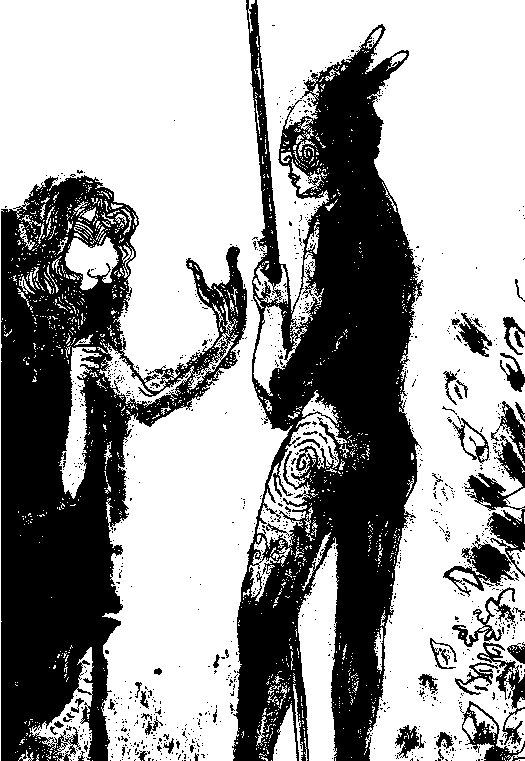
So saying she took her jawbone - for she was dead all down one side from being starved - and handed it to Maui. He carried it to the stream to wash off the blood and the bits of rotten flesh, and the blood went into the kokopu, giving that fish its reddish colour. After this he returned with the jawbone to the place where his brothers lived. Soon afterwards Maui took a wife, and this led to the first of the exploits that he performed with the help of the jawbone of his ancestress. His wife went one day to wash herself in a still stream, and while she was in the water Tuna roa, the ancestor of eels, came slithering around her and made himself objectionable. That is, he touched her most improperly. When she went home she said to Maui: 'There is a man in that pool with very smooth skin.'
Maui at once felt jealous and decided to kill Tuna. He dug a trench beside the pool, and laid down nine logs as skids, so that Tuna might slide over them as when a canoe is launched. Then he told his wife to sit near the trench while he put up a screen to hide himself. Soon Tuna was seen swimming towards her, and as he slithered over the skids Maui ran out and slew him with the enchanted weapon. One end of Tuna went into the sea and became the ngoiro, or conger eel. The other end of Tuna became the fresh-water eel and is still called tuna. A part of him became the kareaou, or supple-jack, whose smooth black canes, like eels among the river-weed, entangle the forest undergrowth today. And the blood of Tuna was absorbed by the rimu, the totara, and other trees, giving their wood its reddish colour. After this exploit Maui lived quietly with his wife, and children were born to them. |
Muri ranga whenua sniffed (it was probably so dark she could not see) in the cardinal directions, beginning towards the south and finally finding Maui by way of the breeze from the west (having moved withershins):
... Leaning on her stick the old woman turned towards the south, and sniffed the air, but no scent of food or man could she detect. She turned her nose round slowly to the east, and then to the north, sniffing carefully at every angle. Still no scent of food or man could she detect, and she would have devoured either, instantly. She almost thought she must have been mistaken, but then she turned to the west for one more try. From the west, the scent of a man came plainly to her nose, and she cried: 'I know from the smell in this breeze that someone is close to me.' As she began to feel about her with her stick Maui murmured something, and she knew at once that he was a descendant of hers. Her stomach, which had been distended to a great size, began to shrink again. This was fortunate for Maui. If his scent had not been carried to that old woman's nose by the westerly breeze, she would certainly have eaten him up ...
It was a Sign and we can probably connect these 4 cardinal directions with those of Ru:
... Ta'aroa sat in his heaven above the earth and conjured forth gods with his words. When he shook off his red and yellow feathers they drifted down and became trees. He created the first parents, Tumu-nui, Great Foundation, to be the husband, and Paparaharaha, Stratum Rock, to be the wife. He put the very essence of himself into their creation; yet when he commanded them to wed, each refused to go to the other. So Ta'aroa created other gods and Atea, Bright Expanse, the Sky-goddess, who dwelt in darkness in the confined sky Rumia.
By Papa-tuoi, Thin Earth, Atea was the mother of children who became artisans for Rai-tupua-nui, Great-Sky-builder. They assisted him in erecting the ten heavens above the earth. In the highest of these dwelt the god Tane, so it was called the Sky-of-the-sacred-omens of Tane and Sky-of-the-water-of-life of Tane. The next highest heaven was called Hiro's Sky-of-prophets. Atea then became the wife of Rua-tupua-nui, Source of Great Growth, and they became the parents of all the celestial beings, first the shooting stars, then the Moon and the Sun, next the comets, then the multitude of stars and constellations, and finally the bright and dark nebulae. When this tremendous task had been accomplished Atea took a third husband, Fa'a-hotu, Make Fruitful. Then occurred a curious event. Whether Atea had wearied of bringing forth offspring we are not told, but certain it is that Atea and her husband Fa'a-hotu exchanged sexes. Then the [male] eyes of Atea glanced down at those of his wife Hotu and they begat Ru. It was this Ru who explored the whole earth and divided it into north, south, east, and west ...
And possibly the month name Ruti should be read as Ru-ti.
| Ru A chill, to shiver, to shudder, to quake; manava ru, groan. Ruru, fever, chill, to shiver, to shake, to tremble, to quiver, to vibrate, commotion, to apprehend, moved, to agitate, to strike the water, to print; manava ruru, alarm; rima ruru, to shake hands. P Pau.: ruru, to shake, to tremble. Mgv.: ru, to shiver with cold, to shake with fever, to tremble. Mq.: ˙, to tremble, to quiver. Ta.: ruru, to tremble. Churchill.
Mgv.: eager, in haste, impatient. Ta.: ru, impatience, haste. Churchill.
Ruru, to tremble, an earthquake. Sa.: lūlū, lue, to shake. To.: luelue, to roll; lulu, to shake. Fu.: lulū, to tremble, to shake, to agitate. Niuē: luelue, to shake; lūlū, to shake, to be shaken. Nuguria: ruhe, motion of the hands in dancing; luhe henua, an earthquake. Uvea, Ha.: lu, lulu, lululu, to shake, to tremble, to flap. Fotuna: no-ruruia, to shake. Ma.: ru, ruru, to shake, an earthquake. Ta., Rarotonga, Rapanui, Pau.: ruru, to shake, to tremble. Mgv.: ru, to tremble; ruru, to shake. Mq.: uu, to shake the head in negation; uuuu, to shake up. Uvea: ue i, to shake; ueue, to move. Rapanui: ueue, to shake. Churchill 2. |
| Ti
1. Liliacea (Cordyline fruticosa); its long, thick root, cooked in the earth oven, is deliciously sweet. 2. To bend down to allow someone to climb on one's back to be carried (haha); he-ti-atu a Kaiga i te tua ivi, he-haha-mai Huri Avai, Kaiga bent his back and Huri Avai climbed on his shoulders. Vanaga.
1. DracŠna. P Mgv., Mq., Ta.: ti, id. 2. Tea. Churchill.

|
... Ti by copulating with Ta (Tattoing) produced the ti. |
(6. he ti ki ai ki roto ki a he ta ka pu te ti) |
... burnt ti leaves were used to produce the black dye for tattooing ...

|
... They were Ranginui, the Sky Father, and Papatuanuku, the Earth Mother, both sealed together in a close embrace. Crushed between the weight of their bodies were their many children, whose oppression deepened. They yearned to be free; they fought their parents and each other to break loose. Tuumatauenga, virile god of war, thrust and shouted; Tangaroa of the oceans whirled and surged; Tawhirirangimaatea, Haumiatiketike and Rongomatane, of wild foods and cultivated crops, tried their best but were not successful; and Ruamoko, god of earthquakes, yet to be born, struggled in the confinement of his mother's womb ... Of them all, Taane Mahuta, the god of the forests, was the most determined; he set his sturdy feet upon his father's chest, and braced his upper back and shoulders against the bosom of his mother. He pushed; and they parted. So the world, as the Maori understand it, came into being ...
I think we should read Ruamoko (the god of earthquakes) as a name for Ru as a descendant of Moko (cfr Hotu a Matua). And Ru could have been a name for Mercury:
|
Names for Mercury: |
|
Hawaiian Islands |
Society Islands |
Tuamotus |
New Zealand |
Pukapuka |
|
Ukali or Ukali-alii 'Following-the-chief' (i.e. the Sun)
Kawela 'Radiant' |
Ta'ero or Ta'ero-arii 'Royal-inebriate' (referring to the eccentric and undignified behavior of the planet as it zigzags from one side of the Sun to the other) |
Fatu-ngarue 'Weave-to-and-fro' Fatu-nga-rue 'Lord of the Earthquake' |
Whiro 'Steals-off-and-hides'; also the universal name for the 'dark of the Moon' or the first day of the lunar month; also the deity of sneak thieves and rascals. |
Te Mata-pili-loa-ki-te-la 'Star-very-close-to-the-Sun' |
...
With the two axes, which were later brought by the Maoris from their far western
homeland and used for 'felling' the tempests on some of their famous voyages,
Tane severed the arms of his father Rangi. By the powerful
incantations of another brother Tane raised Rangi high above the
earth, where he still floats. Then Rangi lamented for his wife and his
tears fell incessantly while Papa, with her youngest godling still at the
breast, moaned and stormed at the cruelty of her sons. Clouds, mists, rain,
frost, and driving snow enveloped earth and sky to the great discomfort of the
gods. To remedy the situation they turned Papa over so that she faced the
Underworld and could no longer look up at Rangi. Thus the youngest child grew up to manhood in the region beneath the earth and became the ruler of earthquakes and volcanic fires with which he still wages war on the upper world in revenge for the inhuman treatment of his parents ... ...
In another old story Rehua mated with Puanga, Rigel, and their
offspring were the clematis

and another plant which were born in Mahuru,
spring (August). They still suckle their mother during August and herald the coming of spring. Their birth was facilitated by Rua-moko, god of earthquakes, who marks the change of seasons
...
...
It was an old Maori belief that a change of seasons was often facilitated by
earthquakes. Ruau-moko, a god of the Underworld, was said to bring about
changes of season, punctuating them with an earthquake. Or as another Maori
saying summed up the matter, 'It is the Earth-mother shaking her breasts, and a
sign of the change of season' ... ...
The Yucatec day name
Caban corresponds to high-land Maya Noh, to Tzeltal (?) Chic,
and to Chuh Kixcab. The element cab means 'earth', and the
equivalent Aztec day is called Movement or Earthquake ... 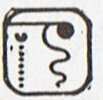
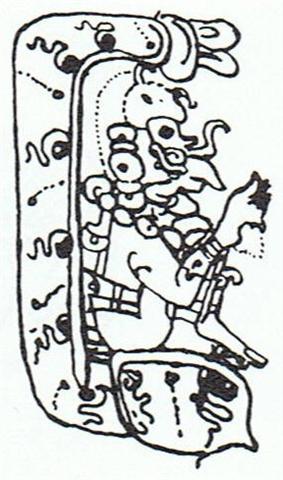
|
























